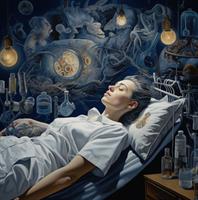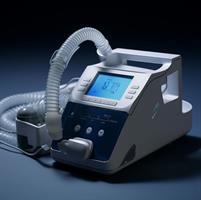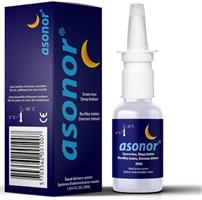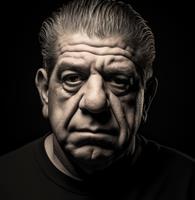Imagine waking up feeling refreshed and alert, without the discomfort of wearing a CPAP mask.
If you’ve been diagnosed with sleep apnea and are seeking a CPAP dental appliance alternative, Oral Appliance Therapy may be the perfect solution to help you sleep better and improve your quality of life.
In this article, we’ll explore the world of Oral Appliance Therapy for sleep apnea, including its benefits, how it works, and how it compares to traditional CPAP treatment. Get ready to discover a new way to treat your sleep apnea and enjoy restful, uninterrupted sleep.
Key Takeaways
-
Oral Appliance Therapy is a preferred CPAP alternative for mild to moderate sleep apnea, offering comfort and ease of use.
-
A qualified dental sleep medicine provider can assess candidacy and customize an oral appliance for effective treatment.
-
Insurance usually covers the cost of Oral Appliance Therapy with real-life success stories leading to improved quality of life.
Discovering Oral Appliance Therapy as a CPAP Alternative
Oral Appliance Therapy (OAT) serves as a sleep apnea remedy, which can mitigate snoring, address sleep apnea, and enhance sleep quality.
It has been demonstrated to be a viable alternative to CPAP for the treatment of sleep apnea, with 81% of patients preferring it over CPAP due to its comfort, discretion, and ease of use. OAT involves the use of custom-made oral devices that are designed to adjust the position of the jaw or tongue, preventing airway blockage during sleep.
The American Academy of Dental Sleep Medicine and the American Academy of Sleep Medicine both support the use of oral appliance therapy to treat moderate obstructive sleep apnea (OSA).
Both these esteemed bodies advocate for this treatment method. Oral appliances prove effective in treating sleep-related breathing disorders. They can be used as a stand-alone remedy or in conjunction with other treatments, such as CPAP therapy, weight management, and surgery.
With a one-year retention rate of 91% for sleep apnea patients treated with a dental appliance, it’s clear that OAT is not only effective but also a more comfortable and convenient option for many patients.
Understanding the Difference between CPAP and Oral Appliances
CPAP (Continuous Positive Airway Pressure) is a machine that delivers pressurized air to maintain an open airway during sleep, whereas oral appliances are small, mouthguard-like devices that adjust the jaw to prevent airway blockage.
Generally, CPAP is more effective for severe obstructive sleep apnea, yet oral appliances are favored by some due to their comfort and ease of use.
The American Academy of Sleep Medicine recommends Oral Appliance Therapy as a primary treatment option for mild to moderate cases of Obstructive Sleep Apnea and can be used in combination with CPAP for more severe cases, known as CPAP oral appliance therapy.
One of the potential drawbacks of CPAP therapy is the system of cumbersome tubes, straps, and facial appliances, which can make it difficult to sleep comfortably.
Additionally, CPAP machines can be noisy, presenting an additional challenge to achieving a peaceful night’s sleep.
Conversely, oral appliances, due to their discreet, comfortable, and quieter nature compared to CPAP machines, attract a substantial number of sleep apnea patients.
Benefits of Choosing Oral Appliance Therapy over CPAP
Oral Appliance Therapy provides numerous benefits over CPAP therapy, including:
-
Discretion
-
Comfort
-
Reduced noise
-
Ease of use
-
Fewer side effects
One common type of oral appliance is the mandibular advancement device (MAD), which helps to open the airway by repositioning the lower jaw forward.
Utilizing an oral appliance eliminates the need to travel with a cumbersome CPAP machine and its accessories, which facilitates compliance with treatment protocol and encourages treatment even when it might not otherwise be utilized.
Oral appliance therapy may provide a more comfortable and convenient treatment alternative for individuals with sleep apnea. Furthermore, oral appliances are less conspicuous than CPAP machines, facilitating their use in public settings.
Additionally, oral appliances are quieter than CPAP machines, making them more suitable for shared sleeping environments.
Overall, oral appliance therapy is a more convenient and lifestyle-friendly option for treating sleep apnea compared to traditional CPAP therapy.
Assessing Your Candidacy for Oral Appliance Therapy
A consultation with a qualified dental sleep medicine provider is necessary to evaluate your suitability for Oral Appliance Therapy.
In order to be considered for OAT, you must:
-
Be diagnosed with mild sleep apnea
-
Have healthy teeth to support the appliance
-
Have no significant temporomandibular joint (TMJ) disorder
-
Have adequate jaw range of motion
-
Meet both medical and dental criteria before the appliance is fabricated.
The most reliable way to assess your eligibility for Oral Appliance Therapy is to schedule an appointment with an AADSM Qualified Dentist for an evaluation. The provider will carry out a thorough examination, including:
-
Your teeth
-
Your gums
-
Your tongue
-
Your airway
-
Your lower jaw’s range of motion
This thorough evaluation will help ensure that OAT is the best treatment option for your specific needs and circumstances.
Customizing Your Oral Appliance for Sleep Apnea Treatment
Upon confirming that Oral Appliance Therapy is your best treatment option for sleep apnea, the physician will prescribe a custom-made oral appliance and recommend a proficient sleep dentist.
The objective when selecting an oral appliance for sleep apnea treatment is to identify an appliance that is both effective and comfortable, thus encouraging adherence to the treatment protocol.
Various considerations are taken into account when designing a customized oral appliance, such as the patient’s current and potential future needs. Digital impressions guarantee precision and customer satisfaction at the highest level when fabricating the oral appliance.
Customized oral appliances are available for sleep apnea patients, including:
-
NarvalTM by Resmed
-
MicrO2® by ProSomnus®
-
SomnoDent®
-
TAP®
-
EMA®
-
HerbstTM
-
Dorsal®
Collaborating with a proficient dental sleep medicine provider guarantees a personalization of your oral appliance to your unique oral structure and needs, offering a more comfortable and effective treatment compared to conventional CPAP machines.
Types of Oral Appliances Available
There are a wide variety of oral appliances available to treat mild to moderate obstructive sleep apnea. In fact, the FDA has granted clearances for more than 100 such devices.
These appliances can be divided into two broad categories: mandibular advancement devices (MADs) and tongue-retaining devices (TRDs). MADs work by shifting the jaw forward, while TRDs secure the tongue in place to prevent it from obstructing the airway.
Each type of oral appliance is designed to treat mild to moderate sleep apnea and, in some cases, severe sleep apnea when combined with other treatments.
By exploring the various types of oral appliances available and working closely with your dental sleep medicine provider, you can find the most suitable and effective appliance for your specific needs and circumstances.
Snoring Mouthpieces As An Alternative
A snoring mouthpiece, also referred to as a mouthguard, is a device intended to reduce snoring. It can be divided into two broad categories: mandibular advancement devices (MADs) and tongue-retaining devices (TRDs).
MADs work by shifting the jaw forward, while TRDs secure the tongue in place to prevent it from obstructing the airway. These mouthpieces are adjustable and can aid in improving breathing and eliminating snoring during sleep.
A snoring mouthpiece can serve as a valid alternative to CPAP therapy for those suffering from mild to moderate sleep apnea. They are easier to use than CPAP machines and often provide a more comfortable and convenient treatment option. However, it’s important to consult with a dental sleep medicine provider to determine if a snoring mouthpiece is the most appropriate treatment for your specific needs.
>> Check out SnoreRx Plus, our favorite snoring mouthpiece! <<
Finding the Right Oral Appliance Provider
Locating an appropriate oral appliance provider is pivotal to the success of your Oral Appliance Therapy. The American Academy of Dental Sleep Medicine database is an excellent resource to locate a provider in your area. Additionally, a simple Google search can be beneficial in finding a qualified dentist.
As you select an oral appliance provider, consider whether the office accepts your medical insurance and if they have a specialist who can guide you through the insurance process. By choosing a provider who is knowledgeable, experienced, and accommodating of your insurance needs, you can ensure a smooth and successful treatment journey.
Insurance Coverage and Costs of Oral Appliance Therapy
The majority of medical insurance plans usually include coverage for Oral Appliance Therapy for sleep apnea. In most cases, medical insurance covers the cost of Oral Appliance Therapy once the deductible or co-insurance is met.
To determine your specific insurance coverage, it’s best to consult with the oral appliance provider’s medical insurance specialist.
The cost of Oral Appliance Therapy may vary depending on the type of appliance and the provider.
Generally, the price of the appliance can range from $500 to $2,500. By understanding the costs and insurance coverage, you can make an informed decision about whether Oral Appliance Therapy is the right choice for your sleep apnea treatment.
Combining Oral Appliance Therapy with Other Treatments
Combining Oral Appliance Therapy with other treatments, such as CPAP or surgery, can enhance sleep quality and treatment outcomes. Combination therapy, comprising of CPAP and an oral appliance, has been observed to enhance sleep quality and enable the patient to reduce the pressure settings on the CPAP machine.
In addition to Oral Appliance Therapy, CPAP (Continuous Positive Airway Pressure) therapy and combination therapy with CPAP and oral appliance are viable options. Integrating Oral Appliance Therapy with other treatments can increase the effectiveness of your sleep apnea therapy and provide you with the best possible outcome.
Caring for Your Oral Appliance
The effectiveness and longevity of your oral appliance rely heavily on its proper care and maintenance. To maintain your appliance, follow these steps:
-
Brush it daily with a toothbrush and non-alcohol mouth rinse or mild soap and water.
-
Rinse thoroughly with cool water.
-
Depending on the type of oral appliance, it may need to be stored in tap water - please refer to the manufacturer’s instructions for further details.
Ascertain that your teeth and mouth are well-cleaned before wearing the device each evening. By following these simple care guidelines, you can keep your oral appliance in optimal condition and maintain its effectiveness in treating your sleep apnea.
Real-Life Success Stories with Oral Appliance Therapy
Many individuals who have struggled with sleep apnea have found relief through Oral Appliance Therapy. These real-life success stories demonstrate the effectiveness and comfort of using a custom-made oral device to maintain an open airway during sleep, as opposed to traditional CPAP machines. Oral Appliance Therapy has not only helped people sleep better but also improved their overall quality of life.
Consider, for instance, a patient diagnosed with moderate sleep apnea who witnessed a significant improvement in sleep quality after transitioning from a CPAP machine to an oral appliance. They found the appliance to be more comfortable, easier to use, and less intrusive than the CPAP machine, ultimately resulting in better adherence to treatment and improved sleep. These success stories showcase the potential benefits of Oral Appliance Therapy and the positive impact it can have on sleep apnea patients experiencing sleep apnea symptoms.
Summary
In conclusion, Oral Appliance Therapy presents a viable and effective alternative to traditional CPAP therapy for individuals with sleep apnea. With its numerous benefits, including comfort, ease of use, and lifestyle compatibility, Oral Appliance Therapy can help improve sleep quality and overall well-being for those struggling with sleep apnea.
By consulting with a qualified dental sleep medicine provider, assessing your candidacy, and customizing your oral appliance, you can embark on a journey towards better sleep and improved quality of life.
Don’t let sleep apnea hold you back from living your best life. Explore Oral Appliance Therapy and discover the perfect CPAP alternative that can help you reclaim your restful nights and energized days.
Frequently Asked Questions
What is an oral appliance to replace a CPAP machine?
An oral appliance is a custom-made device resembling a mouth guard or retainer that can replace a CPAP machine. It works by repositioning the jaw and tongue in a forward position to keep the airway open during sleep, making it less intrusive and disruptive.
What can I use if I don't have a CPAP machine?
If you don't have a CPAP machine, consider trying oral appliances, oral surgery, weight loss, positional therapy, or Inspire Therapy as potential sleep apnea treatment options.
How does Oral Appliance Therapy compare to CPAP therapy?
Oral Appliance Therapy is a preferable treatment option for many sleep apnea patients due to its increased comfort, discretion, and ease of use in comparison to CPAP therapy.
What types of oral appliances are available for sleep apnea treatment?
There are a variety of FDA-cleared oral appliances available for treating sleep apnea, such as mandibular advancement devices (MADs) and tongue-retaining devices (TRDs), providing effective treatment options for those affected by the condition.
Can I combine Oral Appliance Therapy with other treatments?
Yes, Oral Appliance Therapy can be combined with other treatments such as CPAP therapy or surgery, to improve sleep quality and treatment outcomes.
References
- Oral Appliances in Obstructive Sleep Apnea. https://www.ncbi.nlm.nih.gov/pmc/articles/PMC6956298/
- Oral Appliance Treatment for Obstructive Sleep Apnea: An Update. https://www.ncbi.nlm.nih.gov/pmc/articles/PMC3899326/
- The role of oral appliance therapy in obstructive sleep apnoea. https://err.ersjournals.com/content/32/168/220257
- Oral Appliance Therapy for Obstructive Sleep Apnoea: State of the Art. https://www.ncbi.nlm.nih.gov/pmc/articles/PMC6947472/





